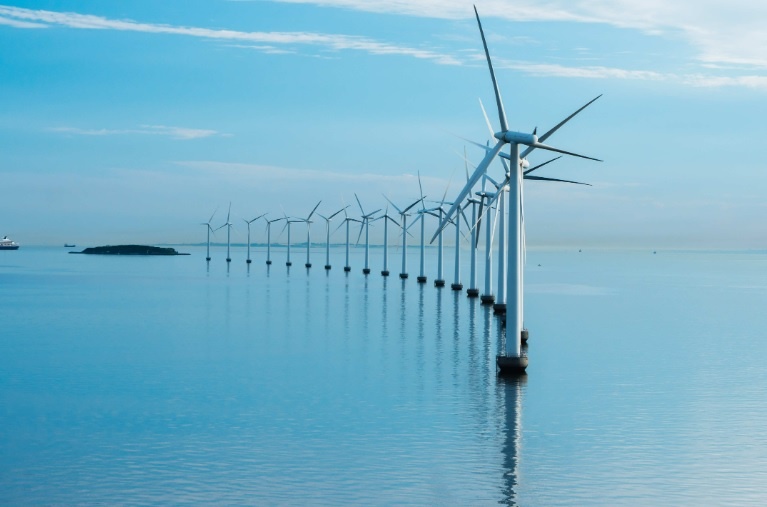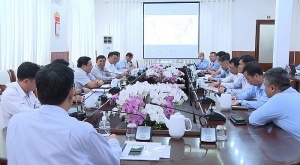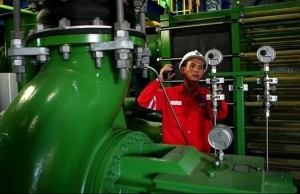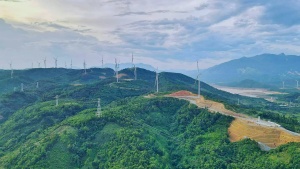Rethink imperative for offshore wind agenda
According to Vietnam’s power strategy for 2030, the offshore wind (OSW) power capacity serving domestic electricity demand will reach about 6,000MW. However, not a single project of this type in the country has agreed on a policy or been assigned to an investor, and thus the ability to achieve the 2030 target is becoming increasingly challenging.
 |
| Rethink imperative for offshore wind agenda, illustration photo/ Source: freepik.com |
Last week, Italian wind power corporation Enel, which was to fund wind farms and generate about 6GW of renewable energy in Vietnam, revealed plans to leave the country. This was said to be a part of the restructuring plans of the global business operations of Enel, Reuters reported.
Following Danish group Ørsted’s move to step back from Vietnam’s wind sector at the end of August, Norwegian state-owned energy group Equinor also confirmed the cancellation of its OSW plans in Vietnam and closed its office in Hanoi.
“One of the reasons for this decision is that the OSW industry has been struggling with many obstacles,” said Equinor spokesperson Magnus Frantzen Eidsvold.
A representative of the company in Vietnam told local media that it could take up to a decade to build an OSW project if the current selling price mechanism was sufficient to calculate future revenues.
“In the following years, the government must ensure that the electricity price will rise at least alongside the inflation index to be good enough for investors, who borrow from banks based on power purchase agreements (PPAs),” he said.
Dang Quoc Toan, member of the Management Board for the LaGan OSW venture, told VIR that the majority of such ventures are seeing no progress. “Despite long discussions about wind power offshore, we have not yet found a clear and unified mechanism for selecting investors, the price policies, or PPAs, which has discouraged them. More of them are going to give up their plans in Vietnam at this rate,” Toan said.
Vietnam had attracted international interest in its renewables plans because of its strong wind in shallow waters near coastal, densely populated areas, according to the World Bank, but delays in regulatory reforms have recently pushed would-be financiers to reconsider their plans.
Regarding the slow implementation of related projects, the Ministry of Planning and Investment pointed out numerous difficulties in a report on key solutions in socioeconomic development for the next 18 months.
There are difficulties in investigating, surveying, exploring, measuring and assigning sea areas. Current laws do not have regulations allowing or approving organisations and individuals to use the sea to measuring, monitoring, investigating, exploring, and surveying the potential for OSW power. And it has not been determined whether the exploitation of natural resources is within the scope of the Law on Marine and Island Environment and Natural Resources.
Approval of policies and selection of investors are also tough because the relevant law does not have regulations on the authority to approve investment policies for initiatives such as offshore wind.
Despite the ambitious targets, the Ministry of Industry and Trade (MoIT) previously acknowledged that this field was too new for Vietnam to have practical experience in implementation of construction, management, and operation.
With major investors cutting short plans to put money into renewable energy in Vietnam, Toan from the LaGan wind project emphasised the need to remove current barriers to develop OSW schemes.
“If there is a clear policy on selling prices of power to calculate efficiency, investors may come back to Vietnam,” he said. “The target of reaching 6,000MW by 2030 is still achievable, despite all the challenges.”
From the investor’s perspective, Vietnam needs to urgently complete the pilot project for developing OSW power and submit it for approval. State-owned groups like PetroVietnam, Vietnam Electricity, or defence units should be assigned to help implement them, said Toan.
Le Manh Cuong, general director of PetroVietnam Technical Services Corporation, said that the quick removal of obstacles would boost the implementation of such ventures, contributing to the power supply for national economic development, pushing Vietnam deeper into OSW power supply chains.
“As of today, we have won bids and implemented over 10 such projects with a total capacity of about 5.5GW, with a total contract value of about $1.5 billion, contributing to reducing emissions of about six million tonnes of CO2 per year,” Cuong said. “We are continuing to invest in missing links such as underground cable production and improving funding in facilities to complete the OSW power supply chain.”
The MoIT is presiding over and coordinating with agencies to build and complete the pilot on developing OSW projects, and will report to the government by the end of this month.
| On September 12, the Government Office issued a notice on removing difficulties for offshore gas and wind power projects. The Ministry of Industry and Trade has to closely work with relevant authorities, especially Vietnam Electricity (EVN) and PetroVietnam to review legal problems related to the development of power projects and propose solutions to the MoIT to synthesise the recommendations into a draft law amending many laws, including those on investment, bidding, public-private partnership, resources, marine environment, and construction. A working group will be established and led by Minister of Industry and Trade Nguyen Hong Dien as head of the group, Dang Hoang An, chairman of EVN, and Le Manh Hung, chairman of PetroVietnam as deputy heads. The group will review all legal problems in the implementation of electricity projects, and then propose amendments and supplements to complete the Electricity Law, which will be completed before September 20 and submitted to the National Assembly for approval at the eighth session. For licensed projects, developers have to comply with their commitments, unless the competent authority will resolutely revoke the licence in accordance with the provisions of law. The Government Standing Committee requested Deputy Prime Minister Bui Thanh Son to immediately assign it to relevant units for implementation. To overcome legal issues in OSW projects, such as output and transfer pricing regulations, solutions should be raised and added into draft laws, the accompanying notice explained. |
 | PV Power to develop $3.98 billion clean energy complex in Ninh Thuan PV Power, also known as PetroVietnam Power Corporation, has plans to start building a clean energy complex in the central province of Ninh Thuan in mid-July. |
 | PV Power proposes 4-billion-USD clean energy complex in Ninh Thuan The Petrovietnam Power Corporation (PV Power) has proposed the implementation of the Lam Son Clean Energy Production Complex project, with an investment of nearly 4 billion USD in Ninh Thuan province. |
 | DPPA approval a win for clean energy The US Department of State’s Bureau of Energy Resources (ENR) applauded the Vietnamese government's approval of a direct power purchase agreement (DPPA) on July 3, a significant milestone towards achieving net-zero emissions by 2050. |
What the stars mean:
★ Poor ★ ★ Promising ★★★ Good ★★★★ Very good ★★★★★ Exceptional
Related Contents
Latest News
More News
- Heavy industries set for pilot greenhouse gas quotas (December 25, 2025 | 10:00)
- Swedfund invests in MSME growth and climate action in Vietnam (December 19, 2025 | 11:42)
- GreenYellow brings solar energy to light up remote schools in Tuyen Quang province (December 19, 2025 | 08:00)
- Charge+, Grab partner to develop EV charging network in Vietnam (December 18, 2025 | 17:11)
- Linking sci-tech and innovation to Vietnam’s net-zero future (December 18, 2025 | 14:31)
- Driving double-digit growth through green and circular transformation in Vietnam (December 17, 2025 | 09:00)
- Standard Chartered and ACCA deepen collaboration to develop Vietnam’s talent for a sustainable future (December 15, 2025 | 18:18)
- Schaeffler reports strong early output from Dong Nai solar project (December 12, 2025 | 15:16)
- Forestry conference highlights biodiversity and sustainability goals (December 09, 2025 | 13:35)
- Home Credit honoured among top 10 sustainable companies in trade and services (December 09, 2025 | 12:18)

 Tag:
Tag:





















 Mobile Version
Mobile Version